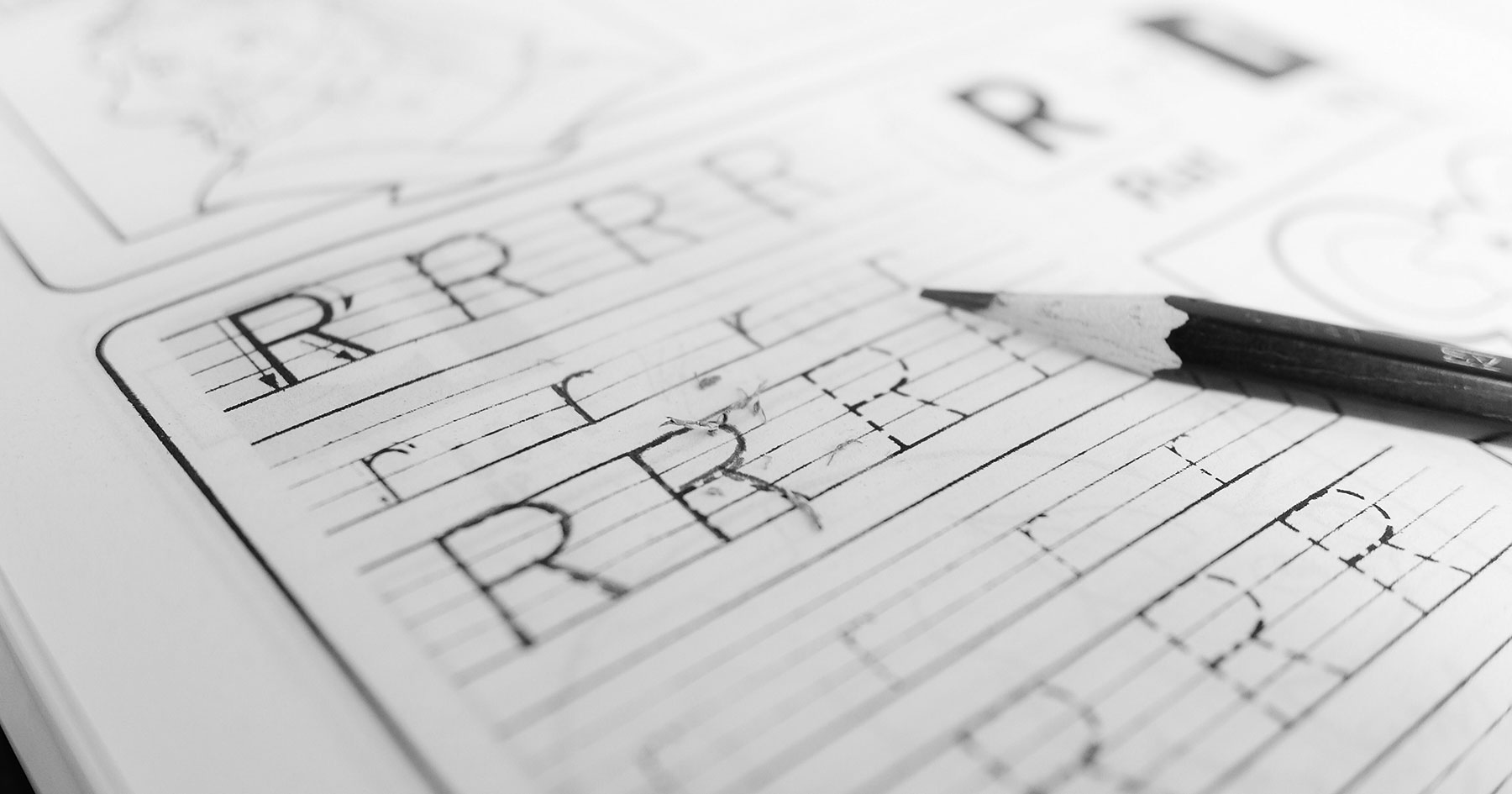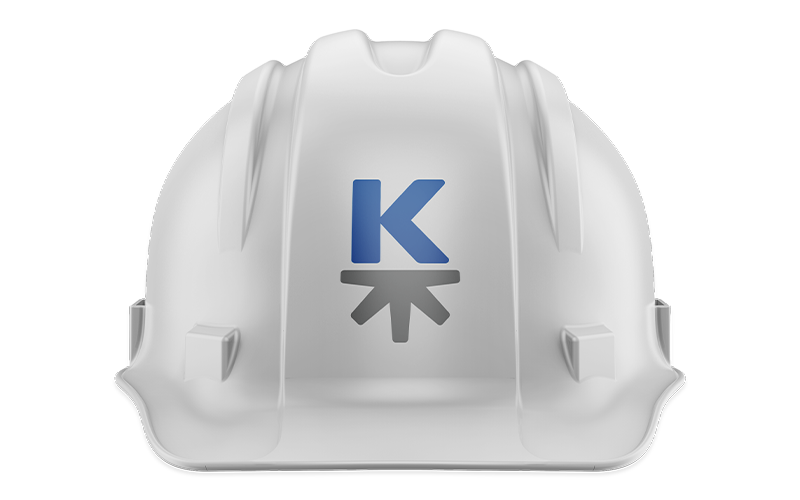Construction Branding Basics: Choosing the Right Font for Your Logo

To keep your construction company successful, you need to stay relevant and adapt to changing times. However, one element that should remain consistent is your logo. While you may adapt it here and there, and update it to move with the times, it should remain instantly recognizable and an integral part of your brand’s identity.
An integral part of any logo is the font.
Choosing the right font for your construction logo is essential, as it helps create a valuable first impression. Not only that, it communicates crucial information such as your business name and services.
In addition, other materials will most likely incorporate the font used in your logo, including branded vehicles, your website, brochures, and other marketing materials. Next to the completed logo, the font is what audiences will most associate with your company branding.
It’s vital to consider how customers will receive a font, as not just the first-time customers see it, but ongoing ones as well. Consider what associations the font will carry, as well as what assumptions potential customers will make about your brand’s identity when they first see it. For construction companies, the correct choice of font can reaffirm the strength of a brand—both literally and figuratively.
How to Choose Logo Fonts
When developing your brand, there are a number of decisions you need to make before marketing your construction company.
Once you have established this, consider which fonts are most likely to evoke the same ideas and feelings that your brand speaks to. The font you select should reflect whether your brand is progressive, creative, serious, and sophisticated, modern and forward thinking, and so on.
There’s almost a limitless supply of different fonts to choose from, and each one tells a different brand story. It’s important to pick a font that complements the style of the logo you’re envisioning. Construction industry logos are usually strong and bold, but they can also be timeless and classic, so you’ll need a font that matches this.
Take a look at the four key font families to choose from:
- Serif logo fonts: These fonts have what is best described as “decorative feet” at the ends of each letter. They tend to evoke a classic, polished feel. It's common for home builders to use serif fonts in their logos.
- Sans-serif logo fonts: These fonts don’t have “feet” at the ends of each letter. They’re considered to be more modern than their serif alternatives. Architects, general contractors, and interior designers tend to like the simple look that san-serif fonts bring to their logos.
- Script logo fonts: These can be both formal and casual typefaces. They have loops and flourishes much like script handwriting. The friendly feel of script fonts may be a good choice if you are a construction company or interior designer that services residential customers.
- Slab serif logo fonts: These fonts are bolder and louder than serifs. It has a specific design that features large letters so you can see them from a long distance. Slab serif fonts are a great choice for commercial and industrial contractors that have equipment and signage out in the field.
How Many Fonts Should A Logo Have?
We believe that logos can incorporate one or two different fonts. If you use more than two, you risk having your logo look too busy or inconsistent. However, this is not a rule that’s set in stone—the number of fonts you use also depends on the amount of text you incorporate into your logo.
As a rule of thumb, use one font for your main brand name, and another for any supporting text.
Combining Logo Fonts
When you combine different logo fonts (1), it’s important to make sure they complement each other to the highest degree. Your main font—the one used for your brand’s name—should be a representative of your brand’s overall style and the most eye-catching.
Your additional selected fonts need to be a lot more subtle. There should be no confusion about which font is the primary and secondary, and there must be a clear difference in size to make the most important lettering stand out. A prime example is this logo for a mixed-use development. The name of the development is Myridium, which is used as the primary text. The tagline underneath is in smaller italic lettering.
Here are a few tips to consider when combining your logo fonts:
- Combine a strong statement font with a more subdued sans-serif font.
- Try combining different versions of the same font—make use of italic, bold, and all cap options.
- As much as possible, avoid combining different statement fonts such as serifs with slab serifs, or script fonts with other script fonts.
The Technical Side
When choosing your font, there are certain technical aspects to consider to ensure your logo achieves maximum levels of effectiveness.
1.) Go The Distance
Make sure that people can read your logo from a distance. We refer to this as kerning, which is the process of creating space between letters to create something that’s both legible and visually pleasing. Sans serif fonts, in particular, retain their readability when they’re kerned.
2.) Think Digital
If your business has an online presence, which every business should, you need to choose a font that’s optimized for web and mobile use. An optimized font ensures your logo looks just as good on a large monitor as it does on a laptop or a smaller phone screen.
3.) Consider Color
It’s also important to consider how your logo will look in different color spaces. For example, your logo might make use of solid colors that will require a gradient background when used on a truck. Think carefully about whether the font you choose loses character and readability if it’s printed against all white, plain black, or even in grayscale.
4.) Stay On The Right Side Of The Law
Perhaps the most important technical consideration of all is whether you have the appropriate licensing to use your preferred font in your logo. You need to do this research in the early stages of your branding, right before you create an identity.
Keep in mind that some fonts are licensed only for personal use. Thus, make sure the font and typography you choose don’t infringe on copyright or IP laws, as this could prove to be a costly mistake (2).
Choose A Font To Build Your Construction Brand On
If you’re building a brand, the font you choose will become an integral part of your identity.
Think of construction brands like Caterpillar, Skanska USA, Kiewit, and Fluor Corporation. Their logo lettering and typography is instantly recognizable, and it forms a connection with customers.
If you are interested in learning more about our approach to the items discussed in this article, call (970) 744-3611 or send us an email so we can talk about what that would look like.


